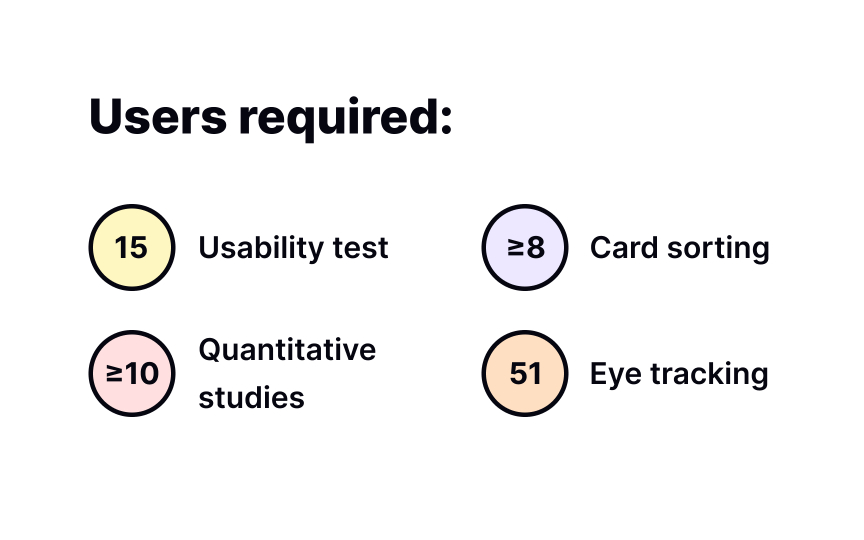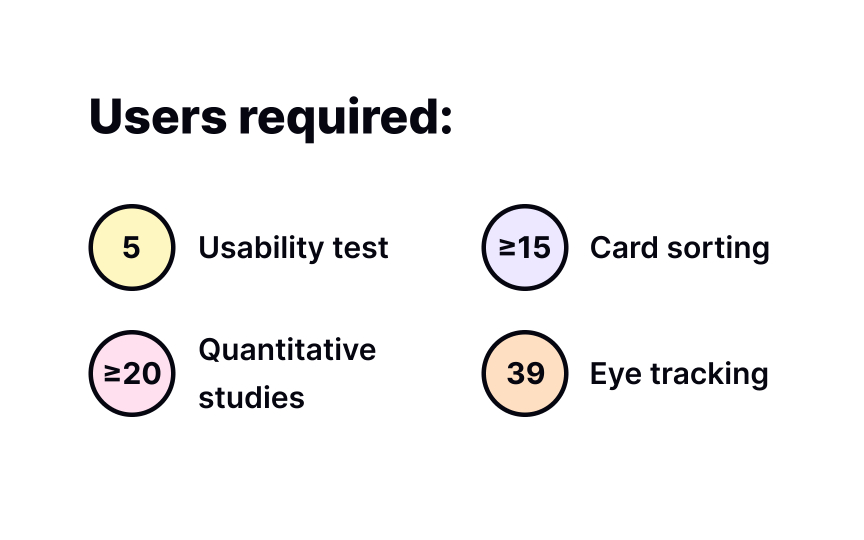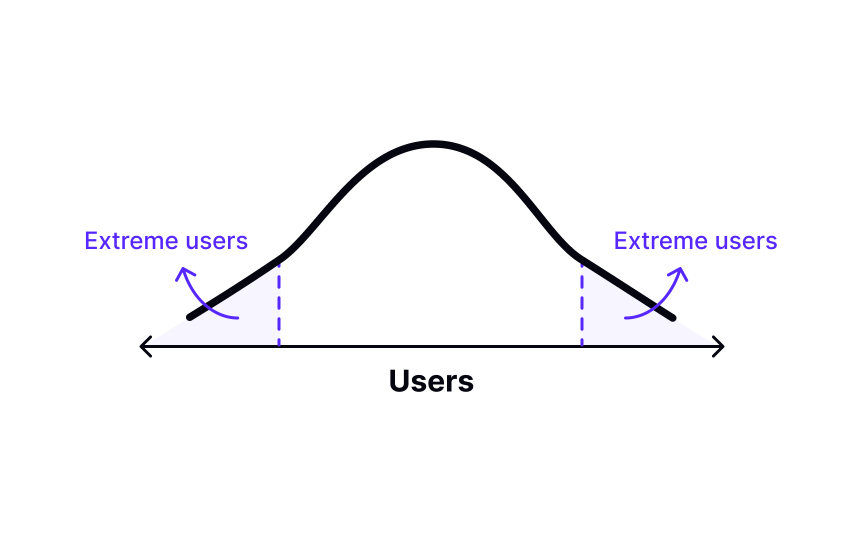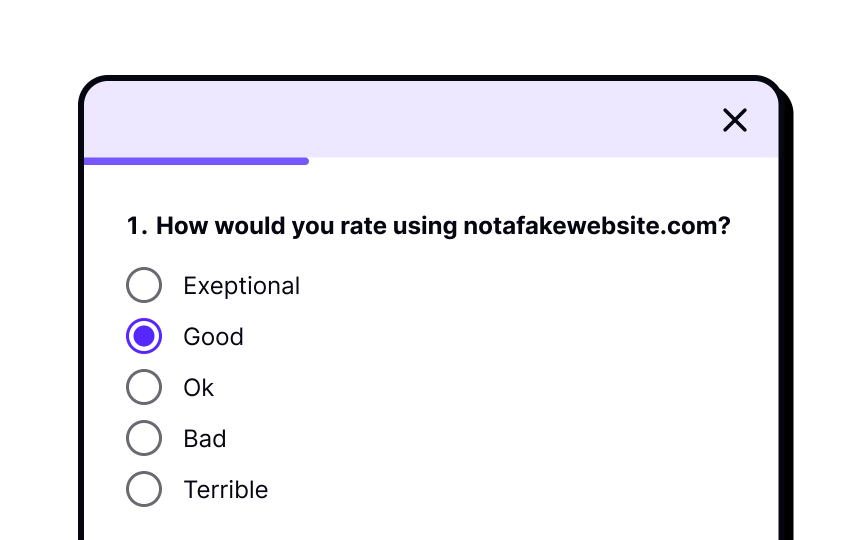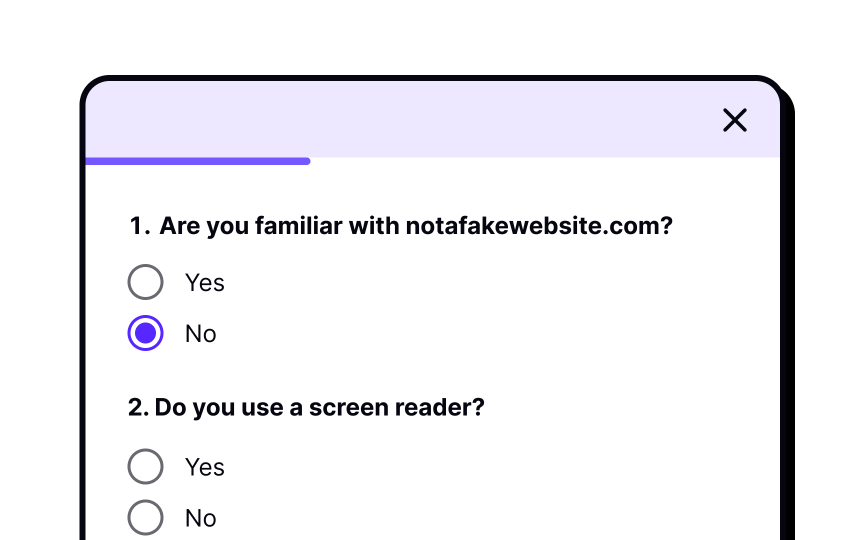Participant Recruitment for UX Research
Learn how to secure a diverse and representative sample that provides valuable insights for your research studies
The relevance and usefulness of your UX research are heavily influenced by your participant recruitment process. The quality of data you collect will depend on:
- The number of participants you induct into your study
- Their representativeness of your target audience
- The screening protocols you have in place
While recruiting participants, it’s important to brief them about the goals of your study and how their information will be used. Also, ensure you gain their full consent and inform them of any incentives they’ll receive for participating.
According to the NN Group, the golden number of participants for usability studies is 5. The exact number of participants you need for your study will depend on the nature of your research:
- Quantitative studies require a minimum of 20 participants
- Card sorting studies require at least 15 users per group
- Eye tracking studies require 39 users to generate stable heatmaps[1]
Recruiting more participants does not mean better data quality in
Using your internal team, i.e., people who work at your organization or department, as participants in your
Here are some exceptions where you may use your internal team in your study:
- Your internal team can participate in pilot testing, where you test the flow and functionality of your product. This is only acceptable if these results don’t appear in your final study findings.
- You may also allow your internal team to participate in your study if they represent your target audience.
Think of your study participants as representatives of your primary target audience. What are the characteristics that your primary target audience exhibits? You may not need to look for all these characteristics in your study participants — just the ones relevant to your current study will do.
Examples of selection criteria include age group, geographical location, and any specific experience participants should or should not have. Include both mainstream and extreme users in your study to cover the broad spectrum of your users.[2]
Remember that the more specific your criteria, the harder it will be to find participants who check all boxes. So, make sure you ascertain the necessity of each criterion.
Once you’ve narrowed down your recruitment criteria, put them together as a detailed screener document — a list of questions aimed at qualifying or disqualifying participants for your study. This screener can be administered online or offline through a survey or an interview.
Select the mode that best suits your time, budget, and goals. Remember, the screening process is the first interaction your participants have with your product, so make sure it is a positive one and provide them clarity wherever it is required.
A screening survey contains a list of qualifying questions that can be administered to people online or offline. Often, people being screened may find ways to answer favorably to participate in the study.
To avoid influencing participants' answers:
- Ensure your survey contains open-ended questions. This encourages people to think on their own and avoid guessing what’s “right.”
- When using multiple choice questions in your screener survey, ensure you include distractors in the options. They closely resemble the correct answer but are, in fact, wrong. This helps you identify people who guess or pick favorable answers.
- Avoid sharing too many details about your study during the screening stage as this too can influence people to answer a certain way.[3]
If you don’t have direct access to participants who are representative of your target audience, you can consider working with a participant recruiter agency. These agencies can come in handy when you are pressed for time but bear in mind that they can be considerably expensive.
When hiring a recruitment agency, make sure you provide adequate details that cover:
- The number of participants you need
- The proposed venue, date, and time of the test
- The duration of the session
- Incentives for the participants, if any
- Any special criteria that participants must fulfill
Pro Tip: Sharing a rough draft of your screener document with your recruiter can help them identify suitable participants more effectively.
Accessibility
Integrate accessibility into your study by ensuring that:
- Your research participants include people with disabilities
- Your data collection methods, such as surveys and other online tools, are accessible
- You provide alternative formats of test participation including remote participation upon request
- Your testing venues are physically accessible
Ethical
A consent form should ideally include:
- The purpose of your study
- The activities and tasks that will be involved in the study
- The option to withdraw voluntarily from the study
- What data will be collected, stored, analyzed, shared, and with whom
- A consent statement
Your study may include children and adults incapable of fully understanding the terms of your study or lacking the full agency needed to make voluntary decisions. In this event, seek out their guardians for their informed consent.[4]
Offering incentives is a good way to encourage high-quality participation in your study. It can also help you build a larger pool of participants and thank them for their valuable time and insights. Most popularly offered incentives include monetary compensation or gift cards. But, incentives can also take the form of credits, discounts, merchandise, or free early access to a feature or service.
When incentivizing your participants:
- Calculate the correct incentive amount or value by factoring in the duration and nature of the task and the skill level of the participants
- Use incentives that can be availed easily by all your test participants
- Decide in advance and inform participants of when they’ll receive their rewards and through what medium
Check out this guide that outlines the most common incentives provided to participants for different types of studies.
References
- How Many Test Users in a Usability Study? | Nielsen Norman Group
- The Basics of Recruiting Participants for User Research | The Interaction Design Foundation
- How to use Screening Questions to Select the Right Participants for User Research | Nielsen Norman Group
- Obtaining Consent for User Research | Nielsen Norman Group
Top contributors
Topics
From Course
Share
Similar lessons

Design Processes & Research Methods

Qualitative UX Research Methods

